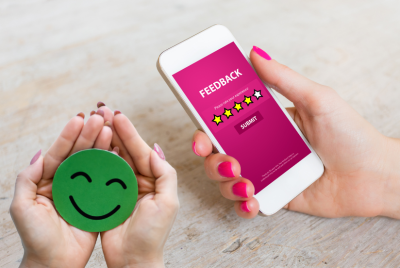Lead Funnel: Your Guide to Effective Customer Engagement
Your journey to mastering lead funnels and accelerating business growth
What Is a Lead Funnel?
A lead funnel is your secret weapon in the world of marketing. Imagine it as a well-crafted roadmap that guides
potential customers from being curious about your product or service to becoming loyal advocates. Essentially, a
lead funnel is a structured pathway that transforms a stranger’s interest into a paying customer.
Understanding the nuances of creating an effective lead funnel can significantly impact your business success. In
this article, we will delve into the depths of lead funnels, unraveling its significance, and providing you with
the tools to build a potent one for your business.
Why Lead Funnels Matter
Creating a lead funnel is not just a trend; it’s a necessity in the modern business landscape. It’s akin to laying
down stepping stones that lead your potential customers to a purchase decision. Without a well-crafted lead
funnel, you risk losing valuable leads and, ultimately, revenue.
In today’s competitive market, you need to grab your audience’s attention and keep them engaged. A lead funnel does
precisely that, nurturing potential buyers and converting them into loyal customers. It’s about making a lasting
impression and building a relationship.
Crafting a Lead Funnel: A Step-by-Step Guide
Let’s break down the art of creating a successful lead funnel into manageable steps. This roadmap will help you set
up an efficient lead funnel that guides prospects seamlessly from awareness to conversion.
1. Research and Understand Your Audience
Before diving into building a lead funnel, you need to comprehend your audience deeply. What are their pain
points, desires, and preferences? Conduct thorough research to tailor your approach effectively.
Understanding your audience is fundamental to constructing a funnel that resonates with them. This is the bedrock
of an efficient lead funnel.
2. Create Compelling Lead Magnets
Lead magnets are like magnets, attracting potential customers to your funnel. They can be e-books, free trials,
exclusive access to content, or anything that provides value to your audience. These should be irresistible offers
that entice visitors to provide their contact information.
Your lead magnet should align with the needs and preferences of your target audience. It’s all about offering
something so valuable that they willingly exchange their contact details for it.
3. Build a Captivating Landing Page
Once you have a compelling lead magnet, it’s time to create a landing page that showcases its value. The landing
page should be visually appealing, clear in its messaging, and have a strong call-to-action (CTA) that directs
visitors to take the desired action.
Remember, your landing page is the gateway to your lead funnel. Make it engaging and easy to navigate, ensuring a
seamless transition to the next step.
4. Engage with Automated Email Campaigns
Emails are a powerful tool in lead nurturing. After capturing leads through your landing page, automated email
campaigns come into play. Craft a series of emails that continue to provide value and guide your leads through the
funnel.
Personalize the emails based on their interactions and behaviors. Each email should lead them closer to making a
purchasing decision.
5. Utilize Persuasive Call-to-Actions (CTAs)
CTAs are the stepping stones within your funnel. These should be strategically placed at various touchpoints,
enticing your leads to take the next step. Use action words that provoke a sense of urgency and excitement.
Whether it’s “Subscribe Now for Exclusive Access” or “Get Your Free Trial Today,” ensure your CTAs are compelling
and impossible to resist.
6. Implement A/B Testing for Optimization
To fine-tune your lead funnel, A/B testing is your best friend. Experiment with different elements like headlines,
CTAs, colors, and layouts to see what resonates best with your audience. Continuous optimization is key to
improving the funnel’s efficiency.
Common Missteps in Lead Funnels
Despite the potential of lead funnels, many businesses stumble due to common mistakes. Let’s shed light on these
missteps to ensure you steer clear of them and maximize the effectiveness of your lead funnel.
1. Neglecting Targeted Audience Research
One of the biggest blunders is crafting a lead funnel without understanding your audience’s specific needs. A
generic approach rarely works. Invest time in thorough audience research to build a funnel that speaks directly to
your target market.
2. Overwhelming Landing Pages
Less is often more, especially when it comes to landing pages. Too much information or a cluttered design can
overwhelm your visitors. Keep it simple, focused, and persuasive to encourage conversions.
FAQs About Lead Funnels
Q1. What’s the primary goal of a lead funnel?
A lead funnel’s primary goal is to guide potential customers through a structured journey, starting from awareness
to conversion. It’s about nurturing and engaging leads until they make a purchasing decision.
Q2. How can I measure the success of my lead funnel?
Success can be measured through various metrics like conversion rates, click-through rates, lead quality, and
ultimately, the revenue generated. Regularly analyze these metrics to optimize and improve your funnel’s
performance.
Q3. Can a lead funnel work for any type of business?
Yes, lead funnels can be tailored for any business, regardless of its size or industry. The key is understanding
your audience and designing a funnel that caters to their unique needs and preferences.
Q4. Are there tools to automate lead funnel processes?
Yes, there are numerous marketing automation tools available that can streamline and automate various aspects of
lead funnels, from email campaigns to analytics, making your processes more efficient.
Q5. How often should I update my lead funnel?
Regular updates are essential to keep your funnel effective and aligned with the changing market dynamics.
Analyze its performance regularly and make necessary adjustments to improve results.
Q6. Can I have multiple lead funnels for different products/services?
Absolutely. In fact, it’s a smart strategy to tailor lead funnels for different products or services. Each funnel
can be customized to suit the unique characteristics and audience of the particular offering.
In Conclusion
Mastering the art of the funnels is your gateway to business success. Understanding your audience, creating
enticing lead magnets, and optimizing every step of the funnel are vital components of a thriving marketing
strategy. Remember, a well-crafted funnel can turn strangers into devoted customers, driving your business
towards unprecedented growth. So, start building your lead funnel today and unlock the true potential of your
business.




